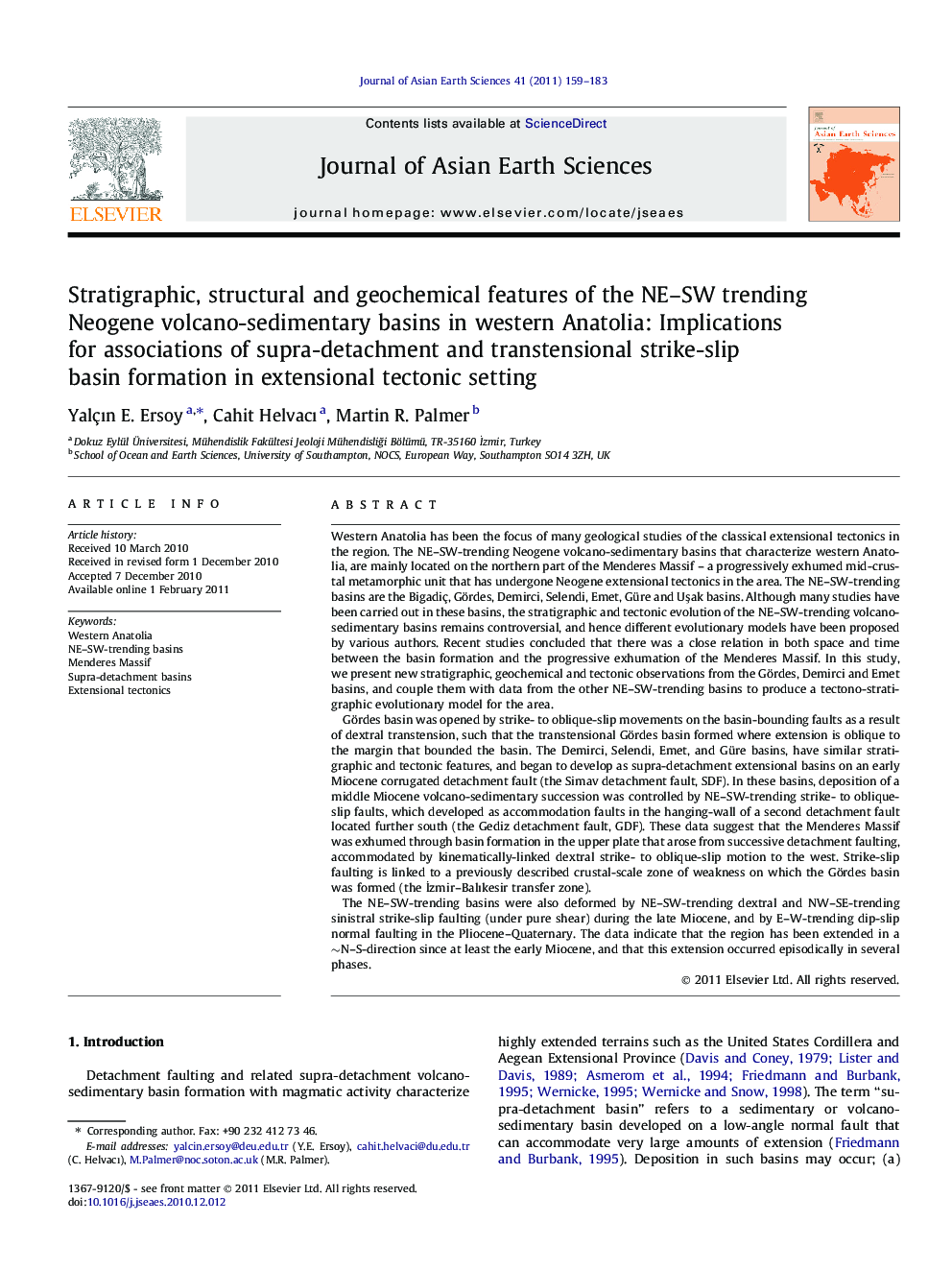| کد مقاله | کد نشریه | سال انتشار | مقاله انگلیسی | نسخه تمام متن |
|---|---|---|---|---|
| 4731941 | 1356830 | 2011 | 25 صفحه PDF | دانلود رایگان |

Western Anatolia has been the focus of many geological studies of the classical extensional tectonics in the region. The NE–SW-trending Neogene volcano-sedimentary basins that characterize western Anatolia, are mainly located on the northern part of the Menderes Massif – a progressively exhumed mid-crustal metamorphic unit that has undergone Neogene extensional tectonics in the area. The NE–SW-trending basins are the Bigadiç, Gördes, Demirci, Selendi, Emet, Güre and Uşak basins. Although many studies have been carried out in these basins, the stratigraphic and tectonic evolution of the NE–SW-trending volcano-sedimentary basins remains controversial, and hence different evolutionary models have been proposed by various authors. Recent studies concluded that there was a close relation in both space and time between the basin formation and the progressive exhumation of the Menderes Massif. In this study, we present new stratigraphic, geochemical and tectonic observations from the Gördes, Demirci and Emet basins, and couple them with data from the other NE–SW-trending basins to produce a tectono-stratigraphic evolutionary model for the area.Gördes basin was opened by strike- to oblique-slip movements on the basin-bounding faults as a result of dextral transtension, such that the transtensional Gördes basin formed where extension is oblique to the margin that bounded the basin. The Demirci, Selendi, Emet, and Güre basins, have similar stratigraphic and tectonic features, and began to develop as supra-detachment extensional basins on an early Miocene corrugated detachment fault (the Simav detachment fault, SDF). In these basins, deposition of a middle Miocene volcano-sedimentary succession was controlled by NE–SW-trending strike- to oblique-slip faults, which developed as accommodation faults in the hanging-wall of a second detachment fault located further south (the Gediz detachment fault, GDF). These data suggest that the Menderes Massif was exhumed through basin formation in the upper plate that arose from successive detachment faulting, accommodated by kinematically-linked dextral strike- to oblique-slip motion to the west. Strike-slip faulting is linked to a previously described crustal-scale zone of weakness on which the Gördes basin was formed (the İzmir–Balıkesir transfer zone).The NE–SW-trending basins were also deformed by NE–SW-trending dextral and NW–SE-trending sinistral strike-slip faulting (under pure shear) during the late Miocene, and by E–W-trending dip-slip normal faulting in the Pliocene–Quaternary. The data indicate that the region has been extended in a ∼N–S-direction since at least the early Miocene, and that this extension occurred episodically in several phases.
Research highlights
► The NE -SW-trending Neogene volcano-sedimentary basins that characterize western Anatolia are mainly located on the northern part of the Menderes Massif that asymmetrically exhumed as a metamorphic core complex during Neogene extensional tectonics in the area.
► These basins record the exhumation mode and history of the Menderes Massif.
► New field data from the Gördes, Demirci and Emet basins are compared with published data from the other basins (Bigadiç, Selendi and Güre).
► It is concluded that the massif was exhumed by a combination of strike-slip faulting to the west and successive detachment faulting to the north and south.
Journal: Journal of Asian Earth Sciences - Volume 41, Issue 2, 1 May 2011, Pages 159–183